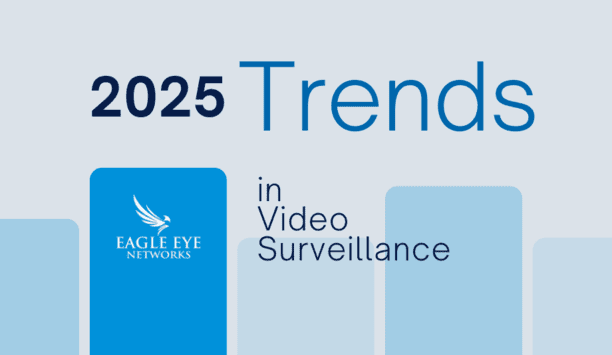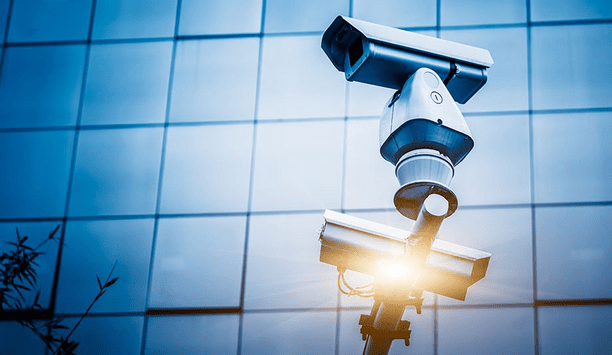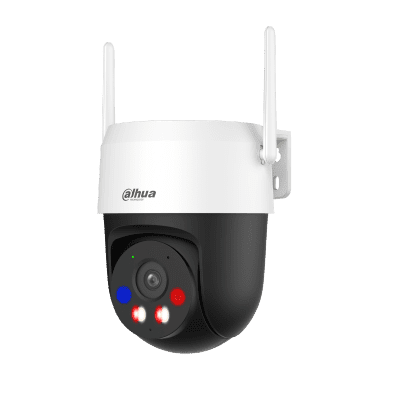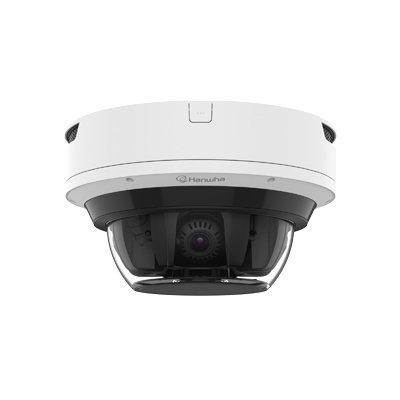What are the security challenges of the healthcare industry?
Editor Introduction
The COVID-19 pandemic has complicated the task of securing hospitals and healthcare facilities by adding new concerns about disease transmission to the long list of other threats healthcare security professionals face. Hospital security must also crack the code to both allow open public access to healthcare facilities while keeping out violence and other security threats. We asked this week’s Expert Panel Roundtable: What are the security challenges of the healthcare industry?
Violence against healthcare workers continues to be one of the most common security challenges faced in the healthcare environment. According to U.S. Bureau of Labour Statistics data from 2018, healthcare and social services workers were five times more likely to experience workplace violence than the norm. Much of the violence occurs in the Emergency Department. A hospital is not able to dictate the type of patient who presents for care at the Emergency Department, and a substantial number of those patients are in crisis. Often the origin of the violence is a combination of clinical (patient status/type), environmental (physical security of the area), and organisation (procedures for reporting, training, type of security response) risk factors. The organisation must acknowledge all three areas and build a program to address them. Establishing a standing Workplace Violence Prevention Committee to develop, monitor, and provide updates is a great place to start.
Healthcare facilities – from large hospital campuses with Level I trauma centers to small medical practices – face an array of security challenges. These spaces need to feel open and accessible to the community but must also implement measures to secure staff, patients, visitors, assets, protected health information, volatile materials, specialised areas such as biosafety labs, and more – as well as enhance overall building health. Healthcare security solutions must also comply with stringent industry regulations required by the Joint Commission on Accreditation of Healthcare Organisations (JCAHO) and the Health Insurance Portability and Accountability Act (HIPAA). Unification of multiple, often disparate systems provides security operations teams with greater situational awareness, efficiency, and control. The ever-present threat of workplace violence necessitates effective tools for in-house security forces. The daily influx of visitors can strain resources, so tightly integrating visitor management with access control can help alleviate that burden while enhancing security.
Modern healthcare facilities can vary considerably in terms of type and size, from local surgeries and care homes to general hospitals and state secure psychiatric hospitals. And each facility faces its security challenges, especially when you consider the infrastructure of the building itself. Within hospitals, for example, sick, newborn, elderly, and vulnerable patients must all be protected while ensuring ease of movement throughout the facility. Varying levels of access control are required in several situations, such as adding security to restrict area access for authorised personnel only – a requirement for medical record hubs and medicine cabinets, for example. For larger-scale facilities in major cities, thought must also go into response strategies to terror attacks and the concerns of securing the building while continuing to operate in those situations. Access control and hardware solutions are at the heart of these challenges, with government codes, regulations and compliance kept front of mind.
Healthcare institutions care deeply about protecting the safety of their patients, staff, and facilities but must balance security against stretched budgets and the need to maintain a welcoming and pleasant environment for patients. A combination of smart video security, audio analytics, and access control solutions can help medical institutions protect patients proactively and reduce liability claims with visual evidence while relieving pressure and increasing operational efficiency. Using artificial intelligence, healthcare security professionals can now enhance their existing systems, such as access control systems and security cameras, to identify potential threats proactively, track high-risk patients, and alert quickly on unusual events. For example, identifying when a high-risk patient leaves their room unattended can prevent or detect fall injuries or detect visitors wandering in prohibited areas. Audio sensors can quickly identify cases of patient aggression, fire safety, and other emergencies, and can alert staff when patients need medical assistance.
One of the most concerning issues for healthcare institutions is workplace unrest, which can lead to violent behaviour. Case in point, in October 2021, Boston’s NPR station reported that Massachusetts General Hospital had an average of two nurses a day that is assaulted, including verbal harassment, physical aggression, and/or antagonistic threats. Reducing assaults is a priority for hospital administrators, personnel management (nursing coordinators), Human Resources, and security directors. The situation has fuelled interest in threat mitigation solutions, deploying tools such as audio aggression detectors, so that security personnel can identify high-risk scenarios and intervene. Other challenges system integrators face when upgrading security systems for healthcare clients include long approval processes and ensuring compliance with installation code requirements, both for the healthcare facility and monitoring regulations. Lastly, healthcare facilities are adjusting to a new normal and learning to respond not only to security but also to environmental, health, and safety threats.
One of the top security challenges the healthcare industry faces is controlling the perimeter. Like many other industries, individual identities have become the new perimeter; however, unlike other industries, healthcare is open and inviting by design. With infectious disease control and Centers for Disease Control and Prevention (CDC) compliance dominating concerns for most healthcare facilities, the security stakes increase as personnel monitor and manage the movements of employees, vendors, contractors, patients, patient visitors, and business visitors. Executing an identification and control process in facilities that are inviting and porous by design, without significantly impacting or infringing upon the patient care and patient visitor experience, can be a major challenge. An essential first step in controlling the perimeter is implementing a visitor management system developed specifically for healthcare—one that is scalable and offers the flexibility to support the various and unique policies of any organisation, building, or department.
Many healthcare providers have known for some time that they will need to implement a solution that follows Drug Enforcement Administration (DEA) rules on electronic prescriptions for controlled substances (EPCS). For healthcare organisations to effectively implement an EPCS solution, they should utilise a partner that can offer different authentication options and identity proofing options, such as HID IdenTrust. For identity proofing, a healthcare organisation should be able to choose a qualified service provider when needed or receive expertise to undertake the responsibility themselves. For authentication options, the healthcare organisation’s partner should be able to provide multiple options for the two-factor authentication (2FA) credential.
Healthcare centres must be ready for anything. Protecting patients and staff while mitigating workplace violence and stressful conditions are already challenging. Constantly changing government regulations make it even harder to remain compliant. Security teams must remain informed in real-time to stay ahead of disruptions and ensure things get back on track quickly so that medical professionals can maintain an exceptional standard of patient care. This makes it increasingly stressful for operators to manage site security, and compliance, while also addressing the unexpected such as violent outbursts or cyber-threats. A unified security platform includes everything from video and access control systems to nurses’ call stations and can manage every system and event from a single interface. Security teams can remain effective at locating lost patients, protecting personnel, safeguarding medical equipment and drugs, and managing building access for employees and volunteers, all while ensuring the healthcare center is compliant and running well.
The unprecedented pandemic has put every industry across the globe to the test. Being at the forefront of it, healthcare is required to be more vigilant and should transform its security apparatus from reactive conventional surveillance to an AI-powered proactive, predictive, and intelligent security system so that the facility managers, compliance, and security team can respond to critical security situation timely and effectively. The solutions such as monitoring the adherence of COVID-related protocols, contact tracing of COVID patients, contactless transactions, ensuring cleanliness, hygiene, and sanitation, facial recognition with mask/no mask, and PPE detection, to name a few, can greatly help the facility managers.
The healthcare industry is a dynamic space that has evolving challenges that impact operations at almost every touchpoint. Healthcare facilities and hospitals alike handle sensitive data, must navigate around strict data protection laws, as well as ensure the health and safety of their staff, patients, and visitors. Add into the mix the critical need to maintain a welcoming space for those coming into the facilities. This is where access control systems play a pivotal role with the ability to add contactless, touchless communication, access, and simplified security tools to balance the dynamic challenges faced by healthcare.
Editor Summary
Security challenges for the healthcare industry are as varied as the broad array of types and sizes of facilities that must be protected. The threats facing healthcare security are also varied, whether it’s violence against healthcare workers or the need to protect patients, visitors, assets, and even health information. Fortunately, the security industry provides abundant choices when it comes to available technology systems, including smarter video and audio, contactless access control, and visitor management, among others.
- Related links
- Ava CCTV software
- Genetec CCTV software
- Genetec Access control controllers
- Genetec Access control software
- HID Access control controllers
- HID Access control software
- Lenel Access control controllers
- Lenel CCTV software
- Lenel Access control software
- Salient Systems CCTV software
- Genetec Network video recorders (NVRs)
- Lenel Electronic keypads
- Salient Systems Network video recorders (NVRs)
Expert commentary
A modern guide to data loss prevention
Download7 proven solutions for law enforcement key control and asset management
DownloadSecurity practices for hotels
Download2025 Trends in video surveillance
DownloadMaximising security and performance
DownloadDahua P3AS-PV 3MP Outdoor Wi-Fi PTZ Camera with Active Defense
Climax Mobile Lite: Advanced Personal Emergency Response System (PERS)
Hanwha Vision 4CH AI Multi-sensor Camera with WAVE VMS

























